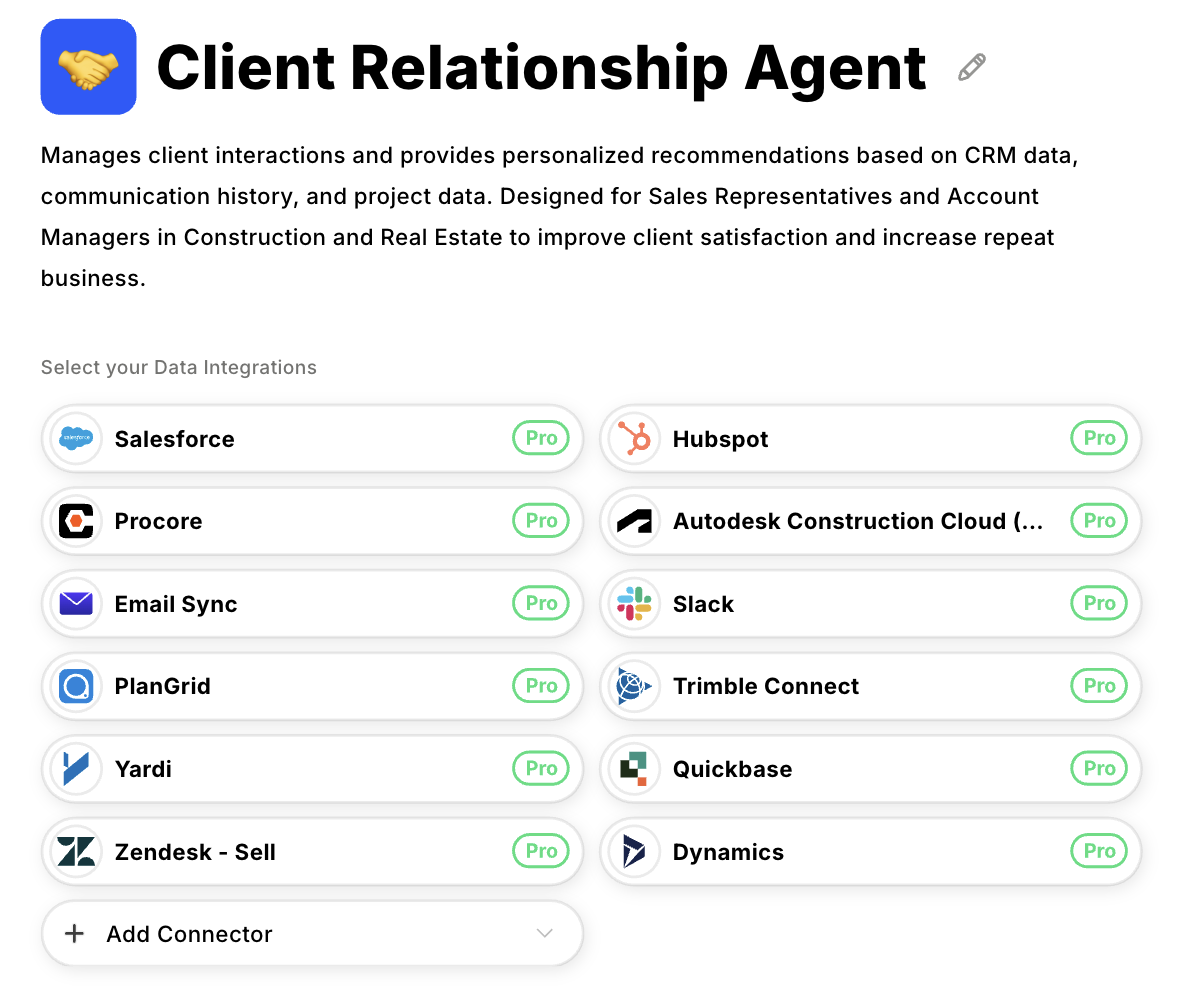Discover how AI eliminates manual data work and transforms customer success teams from reactive account managers into proactive revenue drivers.
Picture this: you're a Customer Success Manager with eight browser tabs open, copying account metrics from Salesforce to your health score spreadsheet while a high-value customer silently slides toward churn.
Customer data lives in CRM, support tickets, usage analytics, and project management tools. Getting a complete account view requires checking all four systems manually, potentially burning a significant amount of time that could have been spent on the renewal call that prevents the churn.
You spend more time processing customer data than analyzing it for insights. This cuts through the data chaos, revealing what customer success actually means beyond data entry, which responsibilities move the retention needle, and which metrics prove you're driving real outcomes.
Clarity here transforms manual data gathering into automated intelligence—freeing you to focus on the strategic conversations that keep customers and revenue growing.
What Is Customer Success?
Customer success is a strategic business function that proactively drives measurable outcomes for your customers—and your revenue—through data-driven engagement.
Customer Success Managers who execute this properly track account health across multiple platforms, identify expansion opportunities through usage patterns, and intervene before small friction points trigger churn risk. They transform scattered customer data into growth levers rather than lagging indicators buried in monthly reports.
Some CS teams still spend hours copying information between CRMs, support tickets, and project management tools, building manual reports that can become outdated by the time they're completed, though this is increasingly less common as more teams adopt integrated solutions.
CSMs become data processors instead of strategic advisors, buried in spreadsheet updates and dashboard maintenance when they should be coaching customers toward value. Reclaiming the strategic mandate means eliminating manual data work that prevents proactive customer engagement.
When CSMs stop processing data and start analyzing insights automatically, customer success evolves from post-sale courtesy to revenue engine—fueling retention, expansion, and genuine partnership through intelligent automation instead of administrative overhead.
Customer Success vs Customer Support
Customer support handles transactional problems—password resets, bug reports, and billing questions. Success managers track product usage data, analyze engagement patterns, and focus on long-term revenue outcomes. Support measures response time and ticket resolution, while success measures retention rates, expansion revenue, and customer lifetime value.
These roles require different workflows: support needs immediate account access, while success needs longitudinal data analysis. When CSMs get pulled into support queues, they lose the proactive visibility that identifies churn risks months before renewal conversations.
This boundary often blurs because success managers spend valuable time gathering usage data instead of analyzing patterns and coaching customers. AI agents can eliminate this overhead, allowing support to handle immediate issues while success focuses on relationship management that prevents future problems.
Key Responsibilities of a Customer Success Manager
Customer Success Managers own six core responsibilities that directly protect revenue and drive growth. Each connects to measurable outcomes that separate strategic impact from administrative busywork.
- Onboarding and implementation come first. Guiding new customers through configuration and training reduces time-to-value and increases early adoption rates—two leading indicators of renewal success. Automating setup tasks frees time to customize those critical first wins that set the long-term trajectory.
- Relationship building and advocacy establish the foundation. Acting as primary contact and championing feature requests drives Net Promoter Score and customer satisfaction upward. Consistent, personal outreach builds the loyalty that prevents silent churn.
- Retention and churn management protect existing revenue. Tracking health scores, usage patterns, and support ticket volume lets you intervene before problems become cancellations. Each saved account preserves recurring revenue without new acquisition costs.
- Product adoption and expansion generate growth. Identifying underused features or upsell opportunities lifts expansion revenue when timed against usage milestones rather than arbitrary quotas. This compound growth accelerates as customers realize more value.
- Data-driven insights and reporting transform signals into priorities. Analyzing usage trends, sentiment, and renewal patterns provides actionable intelligence for weekly planning. Real-time visibility eliminates last-minute scrambling before quarterly business reviews.
- Strategic partnership elevates the relationship from vendor to advisor. Aligning product roadmap discussions with customer KPIs extends lifetime value and creates opportunities for co-innovation. This advisory role positions you as essential infrastructure rather than an optional service.
Each responsibility requires strategic judgment that automation can support but never replace. AI agents handle data collection and pattern recognition, freeing CSMs to focus on relationship building and complex problem-solving that drives retention and expansion.
Essential Customer Success Metrics and KPIs
Understanding customer success metrics is critical for both immediate needs and long-term strategies. Effective tracking balances leading indicators (predictive) with lagging indicators (results-based).
- Leading Indicators - Customer Health Scores and product usage provide early signals of challenges or opportunities
- Lagging Indicators - Churn rate, CLV, and NRR reflect outcomes of past interactions
Key metrics to monitor:
- Customer Retention/Churn Rates - Measure customer base stability over time
- Net Promoter Score (NPS) - Reveals customer loyalty and likelihood to recommend
- Customer Satisfaction (CSAT) - Gauges post-interaction satisfaction
- Net Revenue Retention (NRR) - Shows revenue preserved, including expansions
- Customer Health Score - Aggregates data to predict risks and expansion readiness
- Product Adoption Metrics - Track engagement depth with features
Automated tracking delivers real-time insights without manual data capture, freeing time for strategic activities while providing actionable intelligence that drives successful outcomes.
What Manual Tasks Undermine Customer Success?
Customer Success Managers spend 60% of their time on data processing instead of customer conversations. After every client call, you update CRM records, copy notes to Slack, export usage data to spreadsheets, and build renewal dashboards—burning 4-5 hours daily on duplicate data entry across platforms.
This administrative burden creates a retention crisis. While you process yesterday's data, at-risk customers slip toward churn. Every minute spent moving information between systems is a minute stolen from the strategic conversations that actually prevent cancellations.
Repetitive Data Entry
You finish a customer call with three action items. First, you update the CRM with usage concerns. Then you copy the same notes to Slack for engineering visibility. Finally, you log the conversation in your project management tool for timeline tracking. Multiply this across ten daily customer touchpoints and you've spent three hours on data duplication.
Manual re-entry creates version conflicts across systems. Your CRM shows the renewal date as March 15th, but your spreadsheet tracking shows March 30th. When follow-up reminders fire from different systems, customers receive conflicting information that erodes trust.
AI agents eliminate duplicate data entry through bidirectional system connections. Log a customer concern once in any platform and watch it propagate automatically to CRM, support ticketing, and team communication channels.
Teams using automated data synchronization can reclaim significant time and reduce data inconsistencies, according to industry sources, though specific savings may vary.

Manual Reporting & Analytics
Quarterly Business Reviews demand data from billing systems, product analytics, support tickets, and CRM records. Building comprehensive account health reports requires 4-6 hours per customer—time you could spend rescuing three at-risk accounts. By the time your presentation is ready, the underlying data is already outdated.
Manual reporting creates dangerous lag times. Usage drops on Monday, but your weekly dashboard won't surface the risk until Friday's manual update. That four-day delay turns preventable churn into irreversible cancellations.
AI-powered analytics connect directly to all customer data sources and generate live insights automatically. Instead of weekend spreadsheet building, you walk into Monday morning with real-time health scores that updated overnight. Dynamic reporting transforms data analysis from a historical exercise to a predictive early warning system.
Communication & Follow-Ups
Every customer has unique milestone dates—contract renewals, feature rollouts, quarterly reviews, and onboarding checkpoints. Manually tracking hundreds of timeline triggers across dozens of accounts guarantees missed follow-ups. A renewal reminder arrives two weeks late, your champion has already started vendor conversations, and your expansion opportunity vanishes.
Inconsistent communication creates customer perception problems. High-value accounts receive sporadic outreach while squeaky-wheel customers monopolize attention. Revenue-based prioritization suffers when follow-up timing depends on memory instead of systematic triggers.
Automated reminder systems monitor customer timelines and trigger personalized outreach through email, Slack, or CRM tasks precisely when needed. AI agents track renewal dates, usage anomalies, and engagement patterns, ensuring every account receives proactive attention. No customer goes dark, and no renewal surprise attacks your quarterly numbers.
Customer Segmentation & Prioritization
Every morning starts with the same question: which accounts need attention today? Answering requires cross-referencing support tickets, usage dashboards, billing alerts, and renewal calendars across multiple platforms. This daily triage ritual consumes 45-60 minutes before productive work begins.
Manual prioritization favors visible problems over statistical risks. The customer flooding your inbox gets immediate attention while the $100K account with declining usage patterns stays buried in the dashboard. Revenue-killing churn often comes from quiet accounts, not loud complainers.
Dynamic AI segmentation ranks accounts by revenue impact, churn probability, and expansion potential in real-time. Your priority dashboard updates automatically as product usage shifts, support tickets accumulate, or payment delays emerge. Start each day with the top three actions that protect the most revenue, ranked by data instead of gut feeling.
Documenting Interactions & Notes
Back-to-back customer calls leave you scrambling to capture decisions and action items before the next meeting starts. By afternoon, you're staring at cryptic notes like "integration issues" or "expansion discussion"—hardly the context your future self needs for strategic follow-up.
Incomplete documentation forces redundant customer conversations. When you can't remember previous discussion details, customers repeat explanations they've already provided. This creates frustration and signals poor account management to decision-makers evaluating renewal.
AI transcription agents join every customer meeting, create searchable conversation records, extract action items, and sync insights directly to CRM systems. Meeting documentation completes automatically with consistent formatting and complete context.
Your team accesses full conversation history without pestering you for clarification, and customers never repeat themselves.
Handoffs Between Teams
Sales promises custom analytics during the demo, but implementation details live in the AE's email thread. When onboarding begins, critical context about integration requirements and success criteria gets lost in the handoff. Your customer relationship starts with confusion instead of confidence.
Fragmented customer information across individual notes, email threads, and informal Slack conversations creates knowledge silos. New team members joining accounts start from scratch, asking customers to re-explain requirements and rebuild context that already exists somewhere in your organization.
Connected workflows sync sales commitments, implementation requirements, and customer preferences into unified customer timelines that travel with each account. Automated handoffs help preserve crucial context from initial sales conversations through renewal negotiations, significantly reducing information loss. Every team member inherits full customer history without manual briefings or awkward catch-up calls.
The pattern is clear: Customer Success teams spend 25+ hours weekly on data processing tasks that AI agents can handle automatically. Eliminating manual data work transforms CSMs from administrative coordinators into strategic retention drivers—the role your customers actually pay for.
How Datagrid Simplifies Customer Success Workflows
You know the drill: six tabs open, spreadsheets loading, Slack pings piling up while you hunt for a single health metric. Datagrid's AI agents step into that chaos as tireless coworkers, moving data between your existing tools and eliminating low-value busywork.
- Eliminate duplicate data entry - Update information in Salesforce and watch integrations automate syncing with Zendesk, HubSpot, and Slack channels—reducing manual updates and version conflicts.
- Transform reporting into real-time intelligence - Instead of spending hours building QBR decks, Datagrid pulls usage logs, ticket sentiment, and revenue data into live dashboards. Spot usage dips immediately rather than discovering them weeks later.
- Automate communication follow-ups - AI agents provide proactive insights by analyzing customer profiles, assist with support ticket management, identify recurring issues, and enable efficient cross-platform communication.
- Create dynamic customer segmentation - Agents streamline documentation processes while helping identify administrative follow-ups that need attention.
- Automate documentation - Calls transcribed, action items logged, steps synced across platforms—so handoffs preserve vital details without manual effort.
The transformation is measurable: trade administrative drudgery for strategic conversations—with case studies showing 15+ hours weekly saved through automation. Customer Success evolves from reactive data gatherer to proactive revenue driver without rebuilding your tech stack.

Start Automating Your Customer Success Workflows
CSMs lose 20+ hours weekly updating CRM records, building health score reports, and copying account data between platforms. Datagrid's AI agents eliminate this data processing overhead entirely.
Teams running the platform experience significant reductions in administrative effort while customer health signals update continuously across existing tools. Those reclaimed hours shift to strategic renewals, expansion conversations, and proactive churn prevention that directly impact retention metrics.
Test automated data flows on your highest-volume accounts before your next quarterly review cycle.
Create a free Datagrid account










